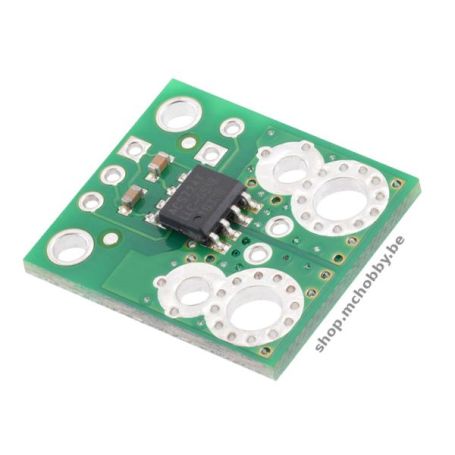Current sensor - 5A - ACS724 - Invasive
Current sensor ACS724 (ACS720 series) - 5A
- Alternative
- -5A to +5A
- 400 mV/A
- Invasive sensor
Payments are secured by LyraCollect, a French payment collection company.
It is possible to delivered to your home, to a pick-up point or picked up by appointment at MCHobby
We prepare, pack and ship your orders with great respect and care.
Make AC current mesure with the ACS724 -5A to +5A
L'ACS724 is an upgrade of the ACS712 previously sale on the MCHobby shop.
Based on the Allegro's ACS724 bidirectional ±5A ACS724LLCTR-05AB, this sensor is placed in series with the load on the AC circuit and can measure the current flowing in the chip. The sensor use the magnetic field created by the flowing current to measure the current (thank to the hall effect).
The sensor generates an output voltage proportional to the current flowing with a ratio of 0.100V/A (400 mV per amp). The output voltage is centered around 2.5V, allowing an Arduino microcontroler to read the input voltage on an analog input.
Please, remember that output signal frequency is identical to the frequency of the input current. When measuring the current of an AC load, the sensor produce a sinus output signal osculating around 2.5V volts.
Attention: the sensor is sensitive to magnetic field, so using a magnet around the sensor will disturb reading. Approaching a magnet will from the sensor will modify the output voltage.
Note:
- Remember to read the output voltage without applying the load to obtain a calibrated value of rest value (supposed to be around 2.5V).
- The breakout offer a "filter" pin, that can be used to improve the output résolution on lower bandwidth (with additional filter cap).
Domestic power grid - Safety recommendation
Wiring this sensor on a Breadboard or prototyping board may be a risk. High voltages connection point are freely available and any accidental contact may be the source of shock, hurt, burn... accidental contact may also cause death. If you do not have the needed skill to connect your project to the power grid then do not hesitate to ask help to a skilled person!
Please, be extremely carefull with high voltage.
Technical details
- Sensitivity: 400 mV per amp
- Logical voltage: 4.5V - 5.5V
- Current: 10mA
- Insulation 2.4kV
- Time to output: 5µS
- Error: 1.5% at 25°C
- Internal conduction resistor: 1.2 mOhms
- Bandwidth of 120 KHz for fast reactivity of enslavement application.
- Almost no magnetic hysteresis
- Weight: ~2gr
- ACS724 noise - around 130mA with 10nF filter cap. Noise can be reduced by using a 470nF cap (source: this youtube video)
- Allégro ACS724 datasheet (PDF, Allegro)
Tutorial
- Use an ACS712 (Wiki, French)
Work the same way as the ACS724.









